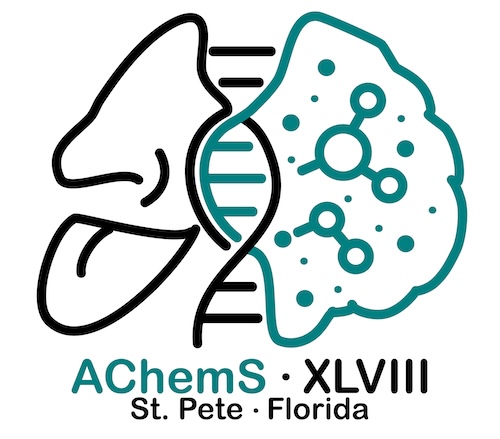COVID-19 and Smell and Taste Function: An Emerging Link
COVID-19 patients around the world are reporting smell and/or taste disruption with infection. Member-researchers of the Association for Chemoreception Sciences are investigating the reported effects of COVID-19 on the smell and taste senses of its sufferers.
Since the start of the COVID-19 outbreak in December, clinician and patient reports have indicated that infection with SARS-CoV-2 is associated with disturbances in smell and taste perception. Such symptoms and these observations are supported by early surveys of infected patients.
On March 20, 2020 the Ear, Nose, and Throat Society of the UK and the British Rhinological Society recommended that people with sudden onset anosmia should self-isolate based upon presumed CoV-2 infection. On March 22, 2020, the American Academy of Otolaryngology made a similar recommendation.
It is important to note that there is no reason at the current time to suspect that people with pre-pandemic smell loss have increased risk of being SARS-CoV-2 carriers. Losses of smell and to a lesser extent taste are common occurrences during upper respiratory infections. The extent to which loss of chemosensory function is a sensitive and specific indication of COVID19 infection in the current pandemic is under global investigation.
AChemS members have initiated international COVID-19 chemosensory research programs ranging in focus from rapid at-home screening tests to longitudinal clinical tracking across borders to understanding the molecular mechanisms of smell and taste dysfunction.
Below are links to new online surveys exploring and tracking chemosensory function, and resources related to chemosensory dysfunction and COVID19, including useful references from the literature and recent press.
Ongoing Surveys of COVID-19 and Chemosensory Function
- The Smell Change Status Check (SCSC)
https://drive.google.com/file/d/173VTA1tLEPemLmmjilihyddDMnLplwFf/view
AChemS member contact/lead: Avery Gilbert, PhD
[email protected] - Smell tracker
https://smelltracker.org/
AChemS member contact/lead: Noam Sobel, PhD
[email protected] - Global Consortium of Chemosensory Research (GCCR)
GCCR Website/Survey: https://gcchemosensr.org/
https://twitter.com/GCChemosensoryR
https://www.facebook.com/groups/Covid19SmellTasteLossGCCR/
https://join.slack.com/t/gccr-mql6351/shared_invite/zt-d0awmu92-bDwjAh_mr_gzvsHcHK5uOQ
AChemS member contact/lead: Valentina Parma, PhD
[email protected] - Yale Jiffy Test
AChems member contact/lead: Dana Small, PhD
[email protected]
For specific details on any of the projects listed, please reach out directly to the AChemS member contact/lead noted.
References From the Press and Scientific Literature
- Seiden, A.M., Postviral olfactory loss. Otolaryngol Clin North Am, 2004. 37(6): p. 1159-66.
- Pellegrino, R., et al., Investigation of chemosensitivity during and after an acute cold. Int Forum Allergy Rhinol, 2017. 7(2): p. 185-191.
- Cowart, B.J., et al., Clinical disorders of smell and taste. Occup Med, 1997. 12(3): p. 465-83.
- Hummel, T., et al., Position paper on olfactory dysfunction. Rhinol Suppl, 2017. 54(26): p. 1-30.
- Stone, J. There’s An Unexpected Loss Of Smell And Taste In Coronavirus Patients. 2020 [cited 2020 March 28th ]; Available from: https://www.forbes.com/sites/judystone/2020/03/20/theres-an-unexpected-loss-of-smell-and-taste-in-coronavirus-patients/#39252ef55101.
- Rabin, R. Loss of sense of smell may be peculiar clue to coronavirus infection. 2020 [cited 2020 March 28th]; Available from: https://www.nytimes.com/2020/03/22/health/coronavirus-symptoms-smell-taste.html.
- Gale, J. NBA Player’s Loss of Smell Highlights Unusual Marker of Covid-19. 2020 [cited 2020 March 28th ]; Available from: https://www.bloomberg.com/news/articles/2020-03-23/nba-player-s-loss-of-smell-highlights-unusual-marker-of-covid-19?utm_campaign=news&utm_medium=bd&utm_source=applenews.
- Bienkov, A. If you've lost your sense of smell or taste, you could be a 'hidden carrier' of the coronavirus. 2020; Available from: https://www.businessinsider.com/coronavirus-symptoms-loss-of-smell-taste-covid-19-anosmia-hyposmia-2020-3.
- Bagheri, S.H.R., et al., Coincidence of COVID-19 epidemic and olfactory dysfunction outbreak. medRxiv, 2020.
- Brann D., Tsukahara, T., Weinreb, C., Logan, D.W., Datta, S.R. Non-neural expression of SARS-CoV-2 entry genes in the olfactory epithelium suggests mechanisms underlying anosmia in COVID-19 patients.
bioRxiv 2020.03.25.009084.
https://doi.org/10.1101/2020.03.25.009084 - Mao, L., et al., Neurological Manifestations of Hospitalized Patients with COVID-19 in Wuhan, China: a retrospective case series study. JAMA Neurol. Published online April 10, 2020. doi:10.1001/jamaneurol.2020.1127 https://jamanetwork.com/journals/jamaneurology/fullarticle/2764549
- Giacomelli, A., et al., Self-reported olfactory and taste disorders in SARS-CoV-2 patients: a cross-sectional study. Clinical Infectious Diseases, 2020.
- Hopkins, C. and N. Kumar. Loss of sense of smell as marker of COVID-19 infection. 2020 [cited 2020 March 28th]; Available from: https://www.entuk.org/sites/default/files/files/Loss%20of%20sense%20of%20smell%20as%20marker%20of%20COVID.pdf.
- American Academy of Otolaryngology - Head and Neck Surgery. Anosmia, Hyposmia, and Dysgeusia Symptoms of Coronavirus Disease,. 2020 [cited 2020 March 28th]; Available from: https://www.entnet.org/content/coronavirus-disease-2019-resources.
- Bell. A. Olfactory acuity test while pre-symptomatic for COVID-19. 2020 [cited 2020 April 13th]; Available from: https://royalsoc.org.au/images/pdf/journal/153-1-Bell.pdf .
- Vaira LA, Salzano G, Deiana G, De Riu G. Anosmia and Ageusia: Common Findings in COVID-19 Patients. Laryngoscope. 2020 Apr 1. doi: 10.1002/lary.28692 https://www.ncbi.nlm.nih.gov/pubmed/32237238
- Meni, C., et al., Loss of smell and taste in combination with other symptoms is a strong predictor of COVID-19 infection. https://www.medrxiv.org/content/10.1101/2020.04.05.20048421v1
- Perniss, A., et al. Chemosensory Cell-Derived Acetylcholine Drives Tracheal Mucociliary Clearance in Response to Virulence-Associated Formyl Peptides. Immunity. 2020 Apr 14;52(4):683-699.e11. doi: 10.1016/j.immuni.2020.03.005. https://www.ncbi.nlm.nih.gov/pubmed/32294408
- Moenin, S. T., et al. Smell dysfunction: A biomarker for COVID‐19. International Forum of Allergy & Rhinology, doi: https://doi.org/10.1002/ALR.22587
- Potter MR, Chen JH, Lobban NS, Doty RL. Olfactory dysfunction from acute upper respiratory infections: relationship to season of onset. Int Forum Allergy Rhinol. 2020 Apr 13. doi: 10.1002/alr.22551. https://www.ncbi.nlm.nih.gov/pubmed/32282136
- Kay, L. Why COVID-19 makes people lose their sense of smell. Scientific American.2020 June 13. https://www.scientificamerican.com/article/why-covid-19-makes-people-lose-their-sense-of-smell1/
Keep up-to-date on AChemS’ member activities, follow @AChemSInfo (Twitter) and visit https://achems.org/web/resources-member-news.php.
For general media inquiries regarding AChemS, please contact Martha Bajec, PhD ([email protected]), Chair, Public Information and Affairs Committee.



